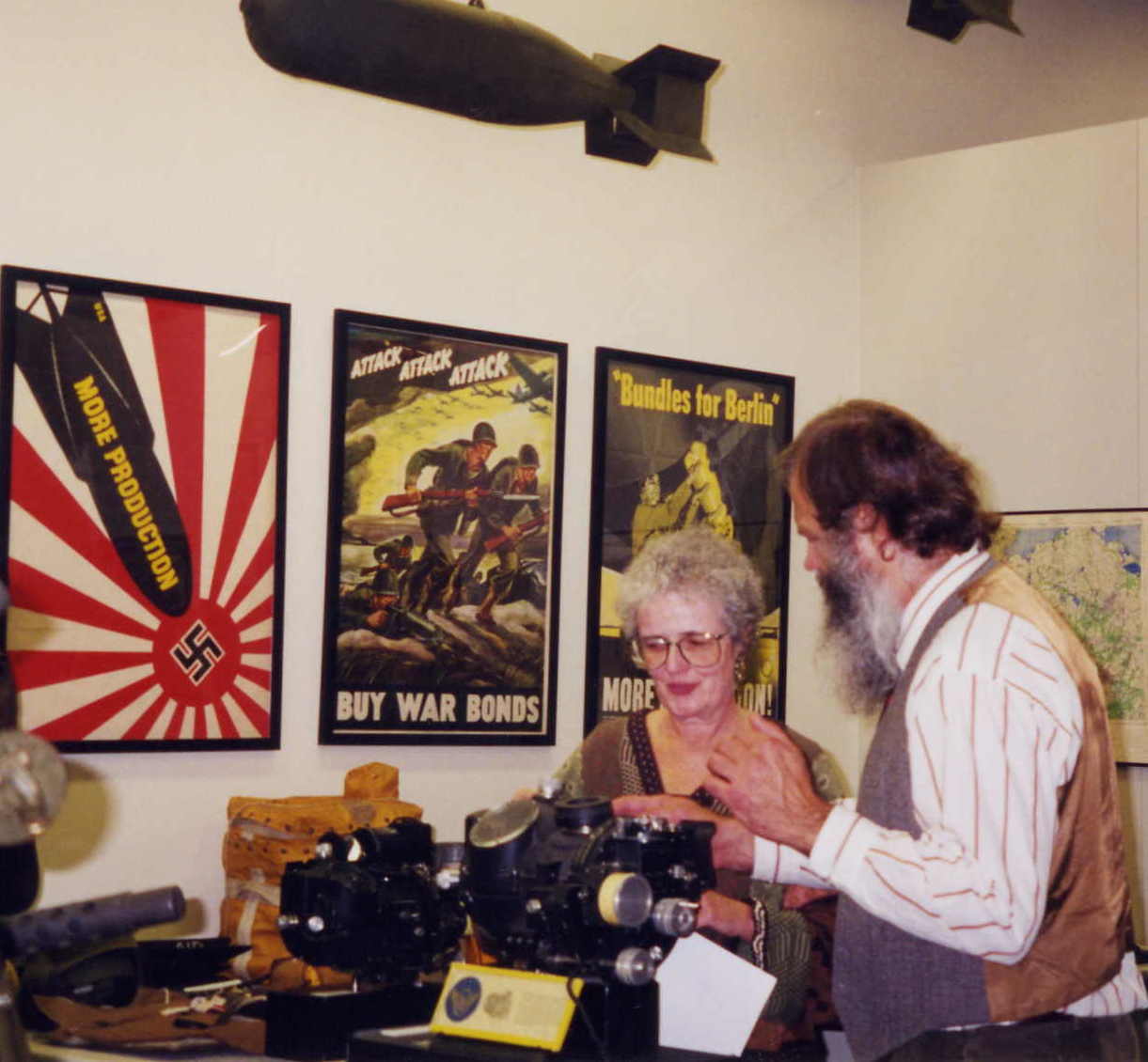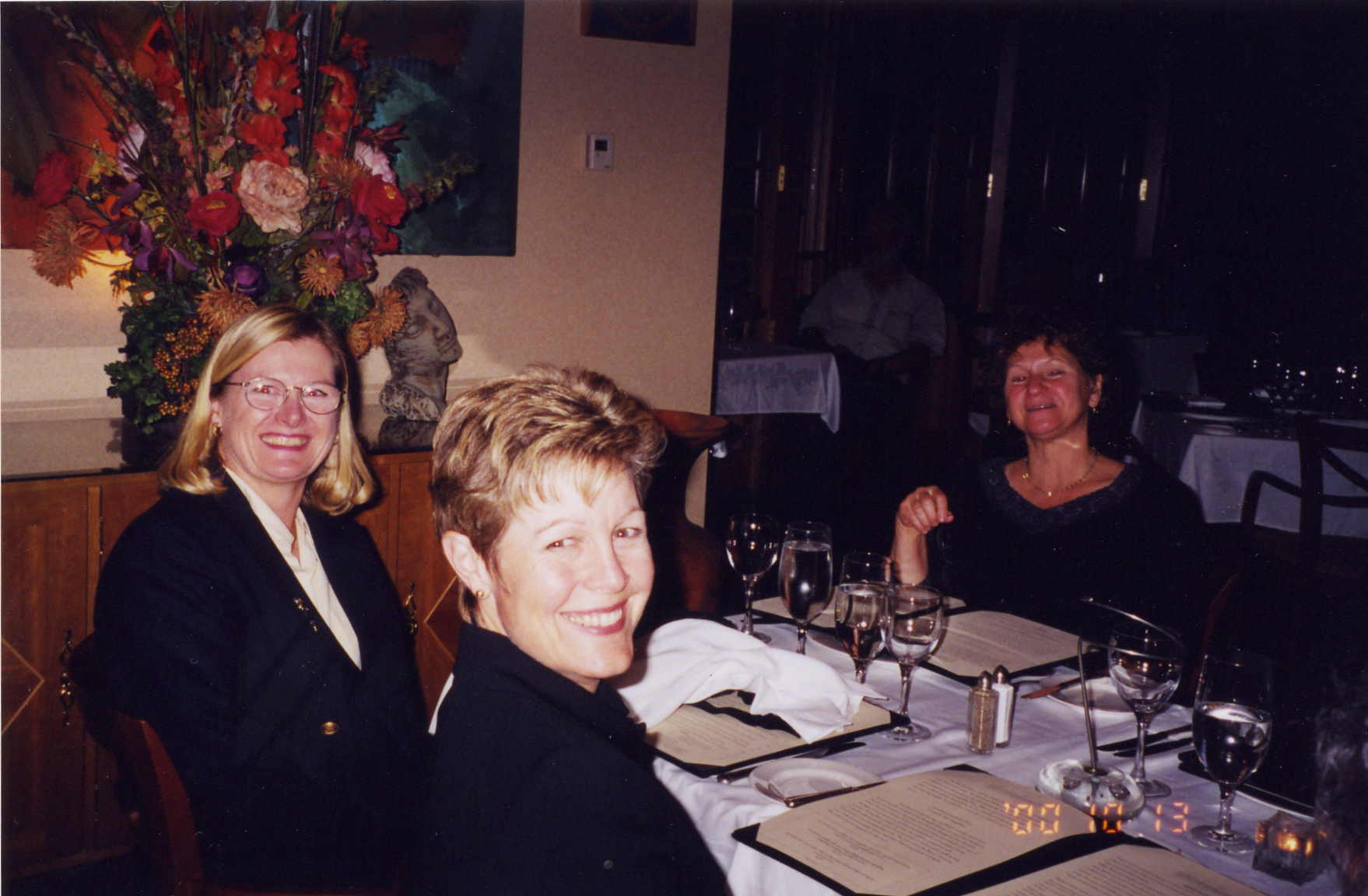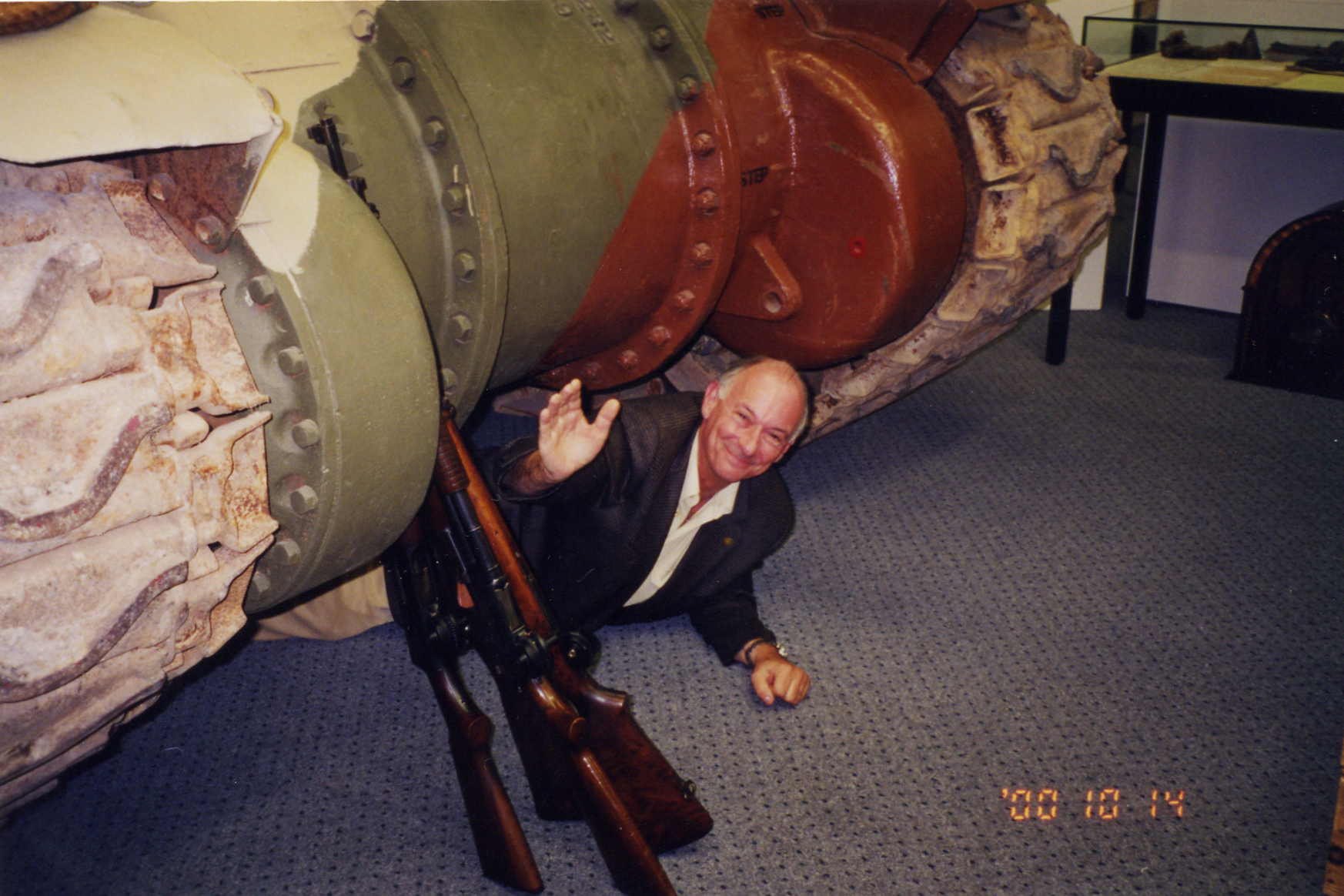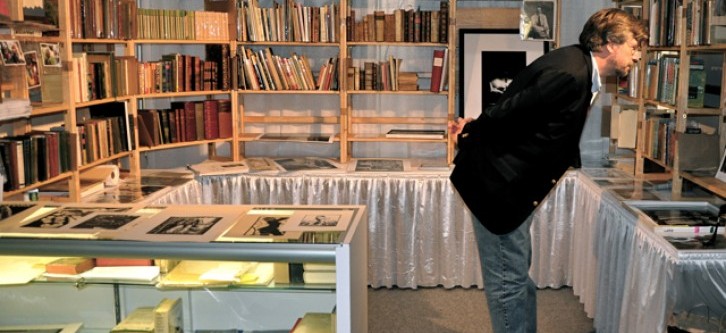I’ve been asked to dredge up a few memories about the Boston book fair, the venues it occupied prior to its current home at the Hynes Convention Center, and some of the dealers who exhibited in Boston in previous generations. Our firm, Howard S. Mott, Inc., is one of six firms to have exhibited at every Boston book fair since its inception in 1976, the upcoming fair being the 38th Annual. The others are Brattle Book Shop, Michael Ginsberg, aGatherin’, Rulon-Miller, and Phil McBlain. The idea for the book fair came from Harold Burstein, and at the first exploratory meeting were Harold, Ken Gloss, Ken Rendell, and Mike Ginsberg.
When the Boston Antiquarian Book Fair began our firm was still a member of the Mid-Atlantic Chapter of the ABAA. The firm started business life in New York City when there was no New England Chapter, and twenty years later, after my father and mother moved the family to Massachusetts in 1956, there was still no NE Chapter. When such a chapter was established my parents were slow to make the change. Thus, we were not involved with the creation of the fair. The early fairs were managed by Anne Bromer’s mother, the indomitable Florence Finn. She was small in stature, but large in personality and authority. No problem was too big or too small for her, and she ran the show beautifully until she retired after something on the order of ten years at the helm.
The first few fairs were held at the Copley Plaza Hotel, and they started slowly despite its ideal location. In the days before the Internet and Google it was nice to have the Boston Public Library across the street to wander into and do research, if necessary. Three rooms at the hotel were used– the ballroom and two other smaller rooms across the hall. In the beginning the show didn’t draw enough exhibitors to fill the available booths, so we were prevailed upon to rent two booths. It worked out perfectly for us because both booths were right inside the entrance to their respective rooms, and whether a potential customer turned left or right off the main hallway, the first booth he/she would see was ours. Sales were 95% to the trade, which was fine, and the early fairs averaged $35,000 a show, which for the mid-70‘s was terrific, and to someone like me making $125.00 a week (before taxes), with a wife and two kids, it was an amount that seemed like all the money in the world.
My father and I manned one booth and offered nothing but books, while my mother had the other stocked with manuscripts, maps, prints and pictures. She usually outsold us. In those days exhibitors could choose to rent the same booth(s) every year, and we did. Alas, after three years the fair thankfully found its footing, we weren’t needed anymore, and we were relegated to a single booth. Actually, one booth was quite enough as my parents gave up even attending book fairs in 1980, and manning two was out of the question. The two smaller rooms off to the side were separated from the ballroom by pairs of heavy curtains with considerable space between them, and room to get behind them. That was in the days when smoking was permitted almost anywhere, and that space proved useful to a few exhibitors, who shall remain nameless, to smoke things that had a funny smell.
Values were, of course, different then, and when one perused AB Weekly to see the list of high spots that dealers were taking to the fair, any material priced in the low thousands was very much at the top end. Anything $3000-$5000 was stratospheric. We, and others, bought and sold well before the fair from those lists in AB. I remember one year when Everett Cunningham, from Oakland, CA, exhibited. Everett was a wonderful fellow, a character if ever there was one. His booth that year seemed to be stocked with not much more than large stacks of old Life Magazines at a couple of dollars a pop. His published response in AB to the question “Did you meet expectations?” was, “I traveled from Oakland, California, had sales of $700.00, and exceeded expectations.”
The late Rocky Gardiner, whose stock could be called “rocky” in terms of its condition, was always in the far room behind us, next to Anthony Garnett from St. Louis. Rocky had a great eye, and turned up wonderful material. At one of those first fairs I bought from him two, not one, but two, New York printed Queen Anne’s War broadsides, ca. 1710, each for less than $300.00. Try finding them today, whatever the price.
I don’t know about other dealers but for us, in those days, it was usually a great buying fair as well as selling, especially with three of us scouting. Over the last 37 book fairs I’ve bought a lot of items, but two finds that pop into my mind immediately are a copy of the first American census in original marbled wrappers (1790), signed in manuscript at the end by Thomas Jefferson as Secretary of State (usually found with his signature excised), and the first of two copies I’ve owned of the first edition of The Confessions of Nat Turner (Baltimore, 1831); the second was Longfellow’s copy, bought 17 years later. Both were found prominently displayed in their respective showcases until I noticed them while taking a last tour around the fair about a half hour before the end of the final day. They had gone unnoticed by me and everyone else for three days.

Maury and Marsha Neville were across from us those first few years, and I remember when a Boston TV channel was at their booth filming Maury for the nightly news as he described his copy of the first Superman comic book, priced $27,000, if memory serves, and me thinking, “What a ridiculous amount of money for a comic book.” I still feel the same way today (but I am sure I would change my mind about that if I happened to find one). Maury sold it, but if he had held it until now it would be priced in the millions. We can all think back on things we sold years ago and estimate what they would be worth today, but that comic book must set some sort of record for increase in value.
Few remember that the standard dealer discount in those days was 10%, and that it was also not necessarily expected of anyone in the trade to pay you at the fair for their purchases. Maureen Jenkins used to go around the fair handing out Johnny’s checks, and I remember thinking how novel that was. I really don’t remember it being the custom before that. I do remember thinking how nice it was to get paid then and there!
Those early fairs were supported by a number of our English friends and colleagues, dealers such as our good friend the late Richard Sawyer; Jonathan Potter; the late Peter Barrie, Barrie’s Books, Cheltenham; Tony Beach (Anthony Pearce, who died last 22nd September), and his wife Francesca, owners of D.M. Beach in Salisbury, John and Judith Head, also of Salisbury; Nick Goodyer of Walford’s; Greg Way, Spike Hughes, who I think did one of the early fairs, and others whose participation I am sorry to have forgotten. There may have been some, but I don’t remember any dealers from the Continent exhibiting until later years.
The Boston fair was a real social occasion as well, and pleasant hours were spent by many in the Copley’s famous Oak Lounge, or in the living-room-like lounge on the other side of the hotel. One could always find great conversation about our trade in that bar no matter the time. Many a good book or manuscript was bought or sold there in a convivial manner. It was one of the best and most comfortable bars in America, and its loss is to be regretted. Then there were the long dinners with many in attendance, occasionally followed by late night dancing at a club.


For some of us who were then bookselling youngsters, all-night poker games under the organizational leadership of Johnny Jenkins took place with regularity, and those games didn’t make some of us popular with our spouses when we returned to our rooms at 6:00am or later (the latest I remember was rolling straight into breakfast at 8:00am in Chicago in 1976). The Copley was a perfect location, a wonderful venue for a smallish book fair.
I don’t remember what year the fair moved from the Copley to the armory, aka, “The Castle”, located on Huntington Avenue, but as a venue it was quite a come-down. Still, as old, cold, and drafty as it was, it worked for most of us. The fair was on street level, and I remember one year we drew just about the worst booth one could possibly have, off in a side space near a very drafty and cold freight door. We had a terrific fair that year, and I requested the same space the following year. Because of its proximity to the Castle most of us out-of-towners stayed at the Park Plaza diagonally across the street. It was convenient, had a Legal Seafood restaurant in the building, a good, small Thai restaurant steps away, as well as lots of other choices nearby. It too had plenty of rooms to rent for our poker games!
One year the fire alarm went off in the Park Plaza, and it wasn’t a drill. So, at around 5:30 or 6:00am the street outside the hotel was filled with hotel guests, including a lot of semi-dressed, shivering booksellers. We will never forget talking with Ben Weinstein and his then-wife Angela while out on the street, he in his silk pajamas and high-end bathrobe. He dressed better for bed than most do when they get up! Very snappy! Luckily, although it was a real fire, it wasn’t a major one, and after what seemed too long spent in the cold, the fire department allowed us back inside.
I don’t remember why the venue changed, but after a number of years at the “Castle” the fair moved to the Boston waterfront, to the Convention Center. We were pleased with it, found some good restaurants nearby, and had an excellent fair, which from what we heard anecdotally, was the exception. It was cavernous for an ABAA fair, and far removed from the center of Boston.
I have fond memories of that waterfront venue, and I am reminded of it almost every day. Hanging on the wall in our kitchen is a folio hand colored broadside (Paris, 1824), advertising American aromatic mustard, the seller authorized by Charles X. At that fair the historian David McCullough, who knew that my wife Veta collects things to do with American food and cookery, came rushing up to our booth, literally took me by the elbow, and ordered “Come with me.” I did, until he stopped at the booth of a colleague where said broadside hung on the wall, whereupon he said “Buy that for Veta.” Doing what I was told, I did. But, for most exhibitors the fair was not a success, and being so far from downtown Boston, it moved again after just one year to its present location at the Hynes Convention Center.
I don’t need to say much about the years at the Hynes as most dealers are familiar with it either as exhibitors, or attendees. I can only say that for us it is an ideal place to have an antiquarian book fair, we hope it never has to move, and we will continue to exhibit in Boston as long as possible. For those of you who have never attended, change your plans this year and come along.





